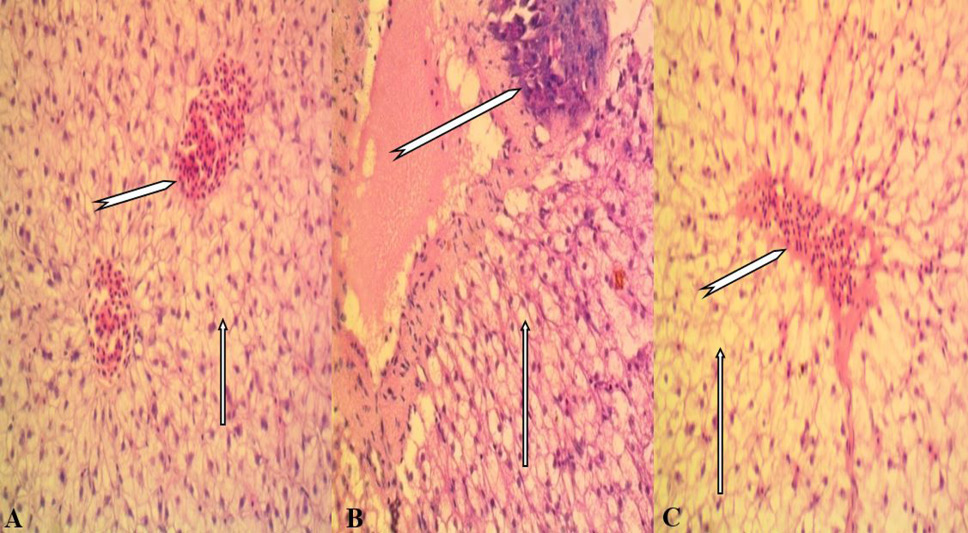Effect of Whole Allium cepa Linn. Bulb Slurry on Haematological and Biochemical Components of Clarias gariepinus Juveniles
Effect of Whole Allium cepa Linn. Bulb Slurry on Haematological and Biochemical Components of Clarias gariepinus Juveniles
Oghenebrorhie M. Oghenochuko1,4*, Olubukola T. Adenubi3, Olusola L. Ajayi3, Fakilahyel M. Mshelbwala3, Johnny O. Olukunle3, Samson A. Rahman3 and Godfrey N.O. Ezeri2
Effect of high concentrations of onion slurry via diet and bath on histological structure of the liver of Clarias gariepinus. A shows severe vacuolar degeneration of hepatocytes (arrow) and congested central vein (arrow head). B shows severe vacuolar degeneration of hepatocytes (arrow) and necrotized liver parenchyma (arrow head). C shows severe vacuolar degeneration of hepatocytes (arrow) and mild congestion of blood vessels (arrow head).
Effect of high concentration of onion slurry via diet and bath on histological structure of the kidney of Clarias garieoinus. A shows degeneration and necrosis of tubular (arrow) and glomerular epithelial cells (arrow head). B shows degeneration and necrosis of tubular (white arrow) and glomerular (red arrow) epithelial cells with haemosiderosis (white arrow heads); there is proteinecious material in the renal tubules (red arrow head). C shows kidney appearing apparently normal (H & E stain). Magnification: 400 X.














